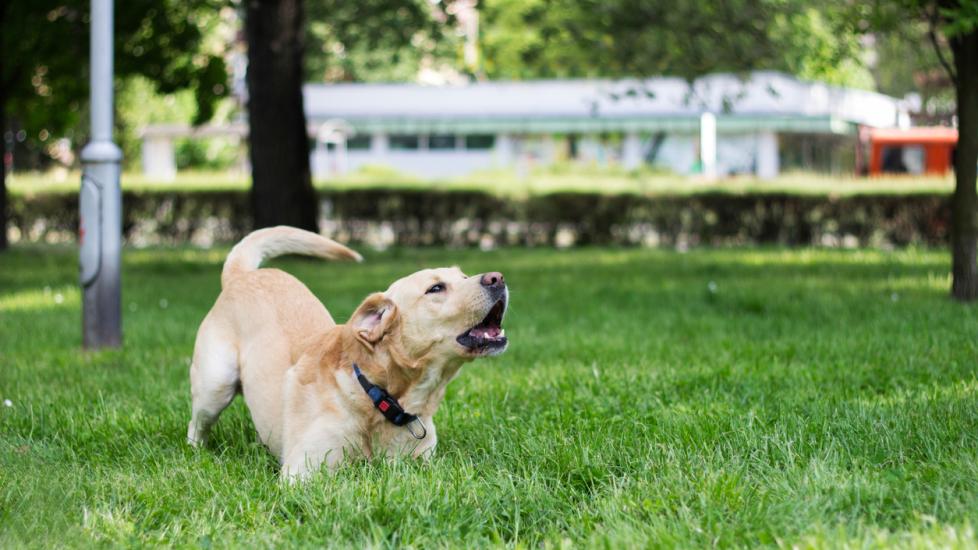Greetings, fellow pet enthusiasts! Today we delve into the intriguing canine behavior that often leaves us scratching our heads or laughing at its amusing nature. Have you ever found yourself wondering why your furry friend suddenly starts growling? Fear not, for this article aims to unravel the mysteries behind a dog’s vocalizations and provide you with practical tips on how to handle such situations effectively. Let’s embark on an educational journey through the fascinating world of dogs and their communication skills!
Dogs are highly communicative creatures, employing various sounds, body language, and facial expressions to convey messages. The growl is one such sound that has intrigued humans for centuries. It is a complex form of communication that can express a multitude of emotions and intentions. Understanding what triggers these growls is key in ensuring harmonious relationships between pets and their human companions.
The Language of Dog Growls:
1. Protective Instinct: A common reason for a dog’s growl is fear or territoriality. When they feel threatened by unfamiliar people, animals, or situations, growling serves as a warning signal to back off. This instinctive reaction is rooted in self-defense mechanisms passed down through generations.
2. Playful Invitation: Believe it or not, growling during playtime can be a sign of excitement and engagement. It indicates that your pooch is having fun and wants to continue the game. However, it’s crucial to recognize when playful growling turns into aggressive behavior.
3. Asserting Dominance: In some cases, especially among pack animals like dogs, growling might be a way to establish dominance within the household hierarchy. Your pup may use it to remind others who’s boss or to assert control over toys, food, or sleeping spots.
4. Pain or Discomfort: If your four-legged companion is experiencing pain from an injury or illness, growling could be their way of communicating distress. Pay close attention to any changes in behavior as they may indicate underlying health issues.
5. Boredom or Anxiety: Just like humans, dogs can get bored or anxious, which sometimes leads to irritability and growling. Providing mental stimulation through interactive toys, regular walks, and training sessions can help alleviate such behaviors.
Handling Dog Growling Safely and Effectively:
1. Recognize the Signals: Familiarize yourself with the different types of growls your dog produces. Each variation may carry a distinct meaning, so knowing the context is vital.
2. Positive Reinforcement Training: Use treats and praise to reward calm and submissive behaviors. Positive reinforcement encourages good manners while discouraging unwanted actions.
3. Create Boundaries: Make sure everyone in the family understands personal space boundaries around the dog. Respect their need for privacy and quiet time without feeling intruded upon.
4. Regular Socialization: Expose your dog to new environments and social interactions regularly. Proper socialization helps them become well-adjusted members of society, reducing the likelihood of aggression towards strangers.
5. Professional Help: If you notice persistent or concerning growling patterns, consider consulting with a professional animal behaviorist or veterinarian. They can offer personalized advice tailored to your dog’s specific needs.
In conclusion, understanding the reasons behind a dog’s growl opens up a dialogue where both species can communicate more effectively. By recognizing the signals and implementing appropriate strategies, we create a loving environment that fosters trust, respect, and mutual enjoyment. So let’s celebrate our beloved pets’ unique ways of expressing themselves and continue learning about the incredible bond we share with our canine companions!
